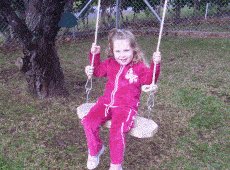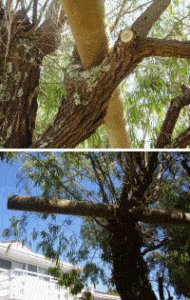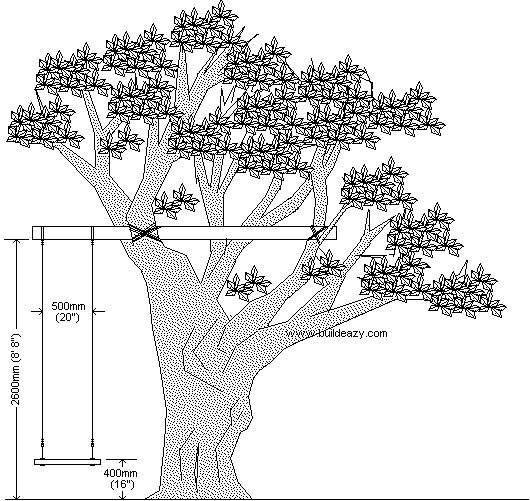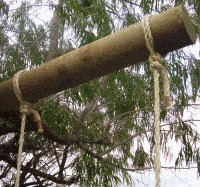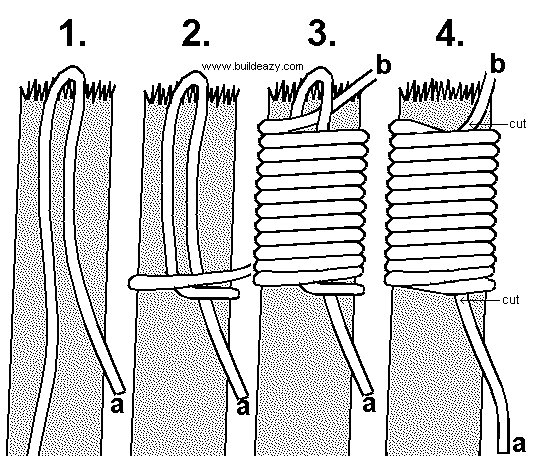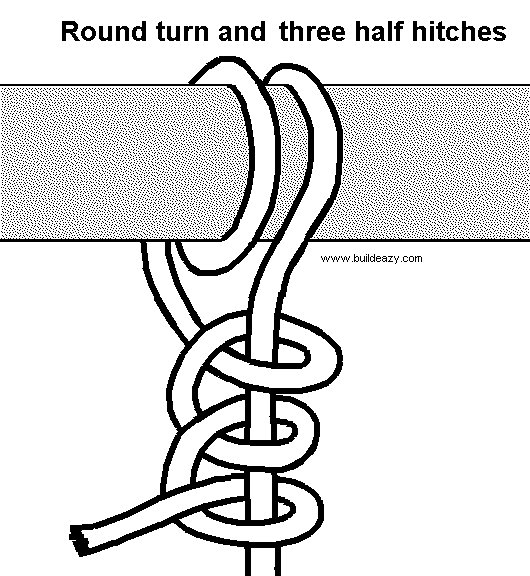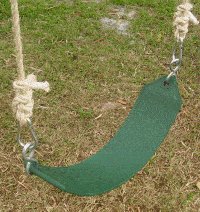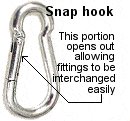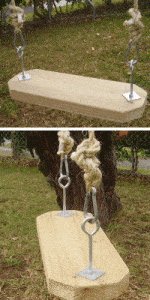The supporting branch or beam
Introduction
This is more or less your traditional basic rope swing, which might be seen hanging from the branch of a suitable tree in many a yard.
In our case, although we were lucky enough to have a tree that was big enough and strong enough to cope with a swing, unfortunately it did not have a suitable branch. So…. we made our own branch from of a beam secured with rope to other branches on the tree. We also made three different seat types to see which would be the one most preferred.
We made the swing strong enough to support an adult, as our hunch that big kids and adults would use the rope swing as much as smaller kids proved correct.
Instructions: The branch or beam
Obviously a tree with a branch suitable for holding a rope swing would be the ideal scenario. However an ideal tree is not always an option and sometimes other initiatives are called for, such as:
- Constructing a complete support frame. One such variation can be seen here.
- Constructing a branch using a beam or pole on a suitable tree.
We opted for the latter.
A treated, 125mm (5″) diameter round post 3000m (10ft) long was secured by rope to other branches on our chosen tree.
The cantilever (overhang) end of the post was placed in the fork of two strong branches for added support.
The overhang was approximately 1000mm (40″), one third of the total length of the post.
The height of the post was approximately 2600mm (8′ 8″) off the ground.
The main branch supporting the overhanging end of the post tapered out from the bottom of the tree, thus allowing plenty of gap between the swing seat and the trunk of the tree.
Dimensions are given in the picture below.
Attaching the swing rope
Instructions continued: Attaching the swing rope
The rope we used for the swing was just good old-fashioned sisal rope 13mm (1/2″) thick. Sisal rope needs some attention at the ends to prevent the fibers untwisting and coming apart (see drawings at the bottom of the page) but does give a more traditional look than synthetic ropes.
Tying the rope
The ropes were tied to the round post using a round turn and three half hitches.
See below for explanations regarding the knots.
One rope was tied 100mm (4″) in from the end of the post. The gap between the two ropes was 500mm (20″).
Half hitches were also used to tie the ropes to the seat.
The ends of the rope needed ‘whipping’, which means that they needed to be bound with a whipping twine to stop the rope from fraying. See below.
Knots required for a Rope Swing Stop the ends of rope from untwisting using the whip knot which is basically binding the rope with a whipping twine. See explanation below the drawing.
- Lay the twine on the rope, making a loop.
- Start wrapping the twine around the rope, making sure to entrap the loop.
- Continue wrapping the twine around the rope and then thread the twine through the end of the loop.
- Pull down end (a) until the loop is pulled into the wrapped twine and then cut off excess twine on both ends (a and b).
Note: The metric (mm) sizes given in this project do not convert exactly to their corresponding ft and inch equivalents
The swing seat
The log seat
This swing seat was made using two logs, each about 85mm (3 3/4″) in diameter.
The logs were 700mm (28″) long and the spacing between the ropes were 500mm (20″).
The rope went down between the two logs, wrapped around the two logs once, threaded up between the two logs and tied with three half hitches.
Result: the seat looked esthetically pleasing in the garden but the kids didn’t seem to like it all that much as it was definitely lacking in comfort and usability.
The belt seat
The belt seat was clipped into a snap hook at each side.
The snap hooks were tied to the rope with three half hitches.
The reason for the snap hook was so that different types of seats could be used and changed easily.
Result: smaller kids loved the belt seat.
The board seat
The board seat was made from a piece of 200mm x 50mm (2″x8″) lumber 600mm (2ft) long.
A 10mm (3/8) hole was drilled 50mm (2″) in from each end of the seat to accommodate 10mm (3/8″) eye-bolts 200mm (8″) long.
The eye-bolts were held in with nuts and 50mm (2″) square washers were used both topside and underside of the seat.
Result: the eye-bolts alter the center of gravity of the seat and give it more stability.
Conclusion
All three seats served a different purpose.
The log seat looked good in the garden and adults liked sitting on it.
Kids under three years old seemed to prefer the belt seat while older kids through to adults seemed to prefer the board seat.
One thing’s for sure…
The swing is nearly always being used!

